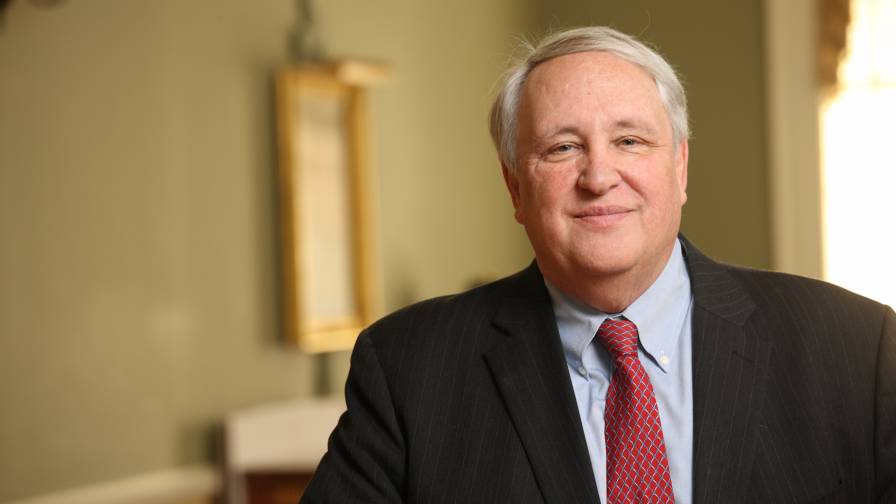
Economic Forecast: New Administration, Ongoing Pandemic Ensure Eventful 2021
By Dave Hendrick
After a year in which major U.S. equity indexes posted double-digit returns despite a deadly pandemic, massive job losses, intense political turmoil and the worst economic contraction since 1946, investors and economy watchers can be certain of little more than continued uncertainty in the year ahead.
Offering their annual economic forecast to the University of Virginia Darden School of Business alumni community, Professor Alan Beckenstein and economist and lecturer Nick Sargen detailed potential near-term drivers of growth, the impediments to a robust recovery and the unlikelihood of a clean V-shaped recovery.
The biggest unknown ingredient in the future is the duration of the pandemic, which continues to suppress economic growth in a variety of ways, according to the economic observers. While vaccinations are underway, the process has been complicated by a patchwork of state and local approaches and a paucity of doses.
“The economy is affected, probably driven, by the pandemic,” said Beckenstein. “It will not be healthy until the populace is healthy.”
Beckenstein said a deeply uneven economic recovery will leave a number of markets in “disequilibrium,” even after the shocks of 2020 are in the rearview mirror, given enormous capital gains for some and unpaid rent and business and job losses for others. Moreover, it’s unclear if many of the jobs lost in 2020 will return in 2021 due to structural shifts in some sectors, all but ensuring the impossibility of a true V-shaped recovery, Beckenstein said.
The ‘Three-Ring Circus’ of US Monetary Policy
Meanwhile, Beckenstein said U.S. monetary policy that had been a “circus” was now decidedly “three-ring,” with little room for further maneuvering from the Federal Reserve. While fiscal policy was effective in preventing a total collapse of the U.S. economy in 2020, the moves amounted to bandages, not fuel for sustainable intermediate and long-term growth, in Beckenstein’s estimation.
Record low interest rates will continue to distort capital markets, Beckenstein said, and while low rates could potentially be used to stimulate productive investments in fields ranging from infrastructure to education, he insists the long-term defects will be detrimental to sustainable success.
Said Beckenstein, “What is needed are short-term recovery plans that are moored into an intermediate and long-term growth plan.”
The pandemic might also throw “a few curveballs” as new variants of the virus could delay a post-pandemic recovery. Further obstacles might include some vocal anti-vaccine sentiment and political risk from what Beckenstein described as domestic terrorism and conspiracy theories.
What the Economic Outlook Means for Investors
So what does an uneven recovery and the uncertain overhang mean for investing now? After the steep run up of 2020, Sargen said it was clear U.S. equity markets are currently “pricing in a lot of good news.”
Sargen ascribed the general sentiment of the current consensus as: “I know things are bad now, but the most important thing is vaccines are coming by the second half of the year, most people will have received them so we will have herd immunity, and you will see a very strong recovery.”
Added Sargen, “The bottom line is markets are pricing in a return to normalcy.”
While the Trump administration made turbocharging the growth rate of the U.S. economy an explicit goal, Sargen said to expect the new Biden administration to be less focused on hitting a particular rate of growth, and more so on getting the virus under control and eventually taking steps to ameliorate income inequality. The latter will involve an increase in spending funded in part by taxes on wealthier Americans, but Sargen said a potential roll back of the Tax Cuts and Jobs Act appears to be more of a 2022 story.
Despite the huge uncertainty, Sargen said he expected a return to something like normalcy for the economy by the second half of the year. For investors, he expected potential modest upside this year. Sargen believes that, while much positive sentiment is indeed baked in (he noted the Standard & Poor’s 500 Index is up nearly 50 percent over the past two years, despite flat-to-down corporate profits), prices do not appear to be in bubble territory by key investing measures.
Given the divergent performance in sectors in 2020, with the outsized performance of tech stocks making up for sagging returns in other sectors, Sargen said a return to economic normalcy could see investments rotating out of tech shares and into sectors that fell out of favor during the pandemic. Investors may be wise to consider their portfolios with an eye toward greater diversity in the year ahead, he said.
The University of Virginia Darden School of Business prepares responsible global leaders through unparalleled transformational learning experiences. Darden’s graduate degree programs (MBA, MSBA and Ph.D.) and Executive Education & Lifelong Learning programs offered by the Darden School Foundation set the stage for a lifetime of career advancement and impact. Darden’s top-ranked faculty, renowned for teaching excellence, inspires and shapes modern business leadership worldwide through research, thought leadership and business publishing. Darden has Grounds in Charlottesville, Virginia, and the Washington, D.C., area and a global community that includes 18,000 alumni in 90 countries. Darden was established in 1955 at the University of Virginia, a top public university founded by Thomas Jefferson in 1819 in Charlottesville, Virginia.
Press Contact
Molly Mitchell
Associate Director of Content Marketing and Social Media
Darden School of Business
University of Virginia
MitchellM@darden.virginia.edu







